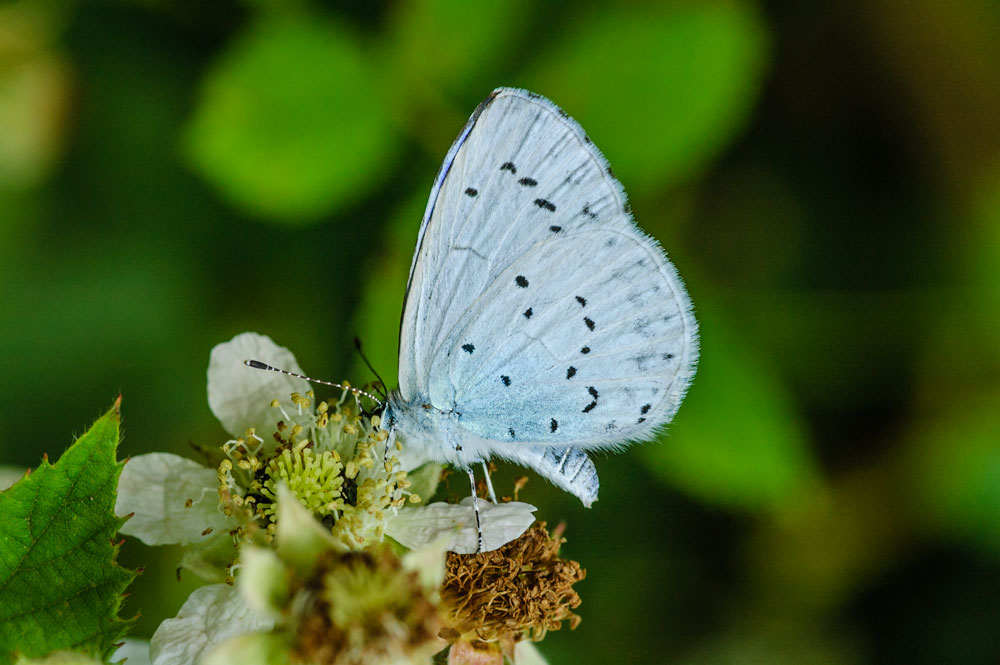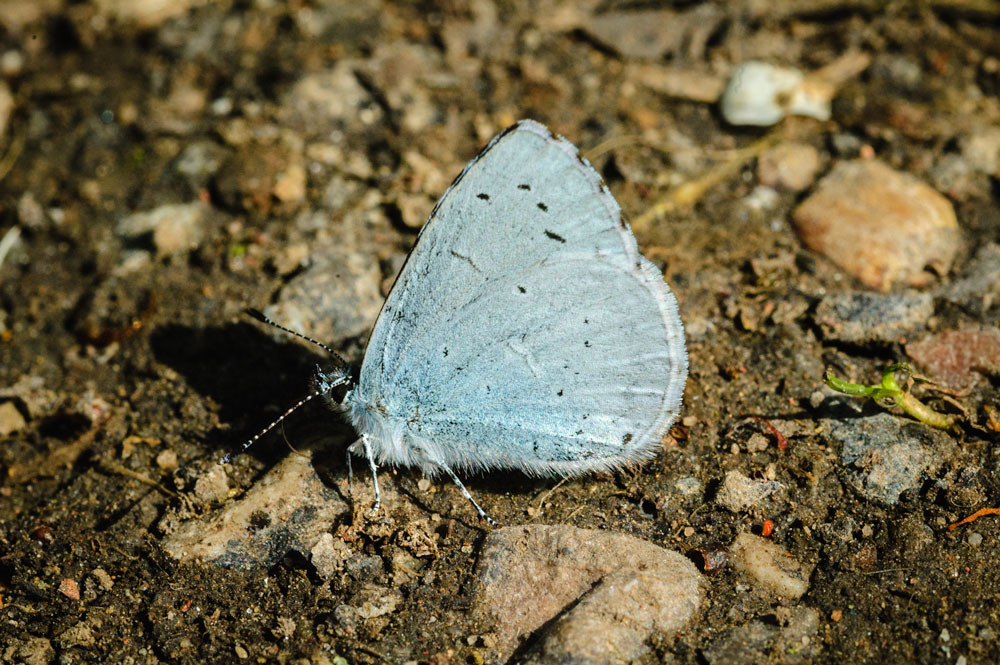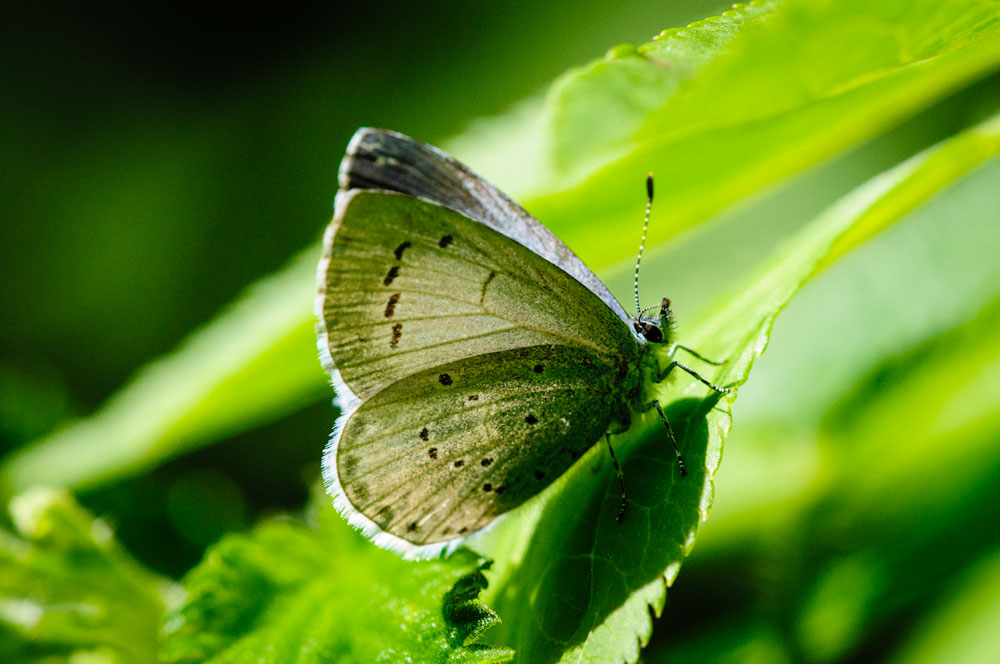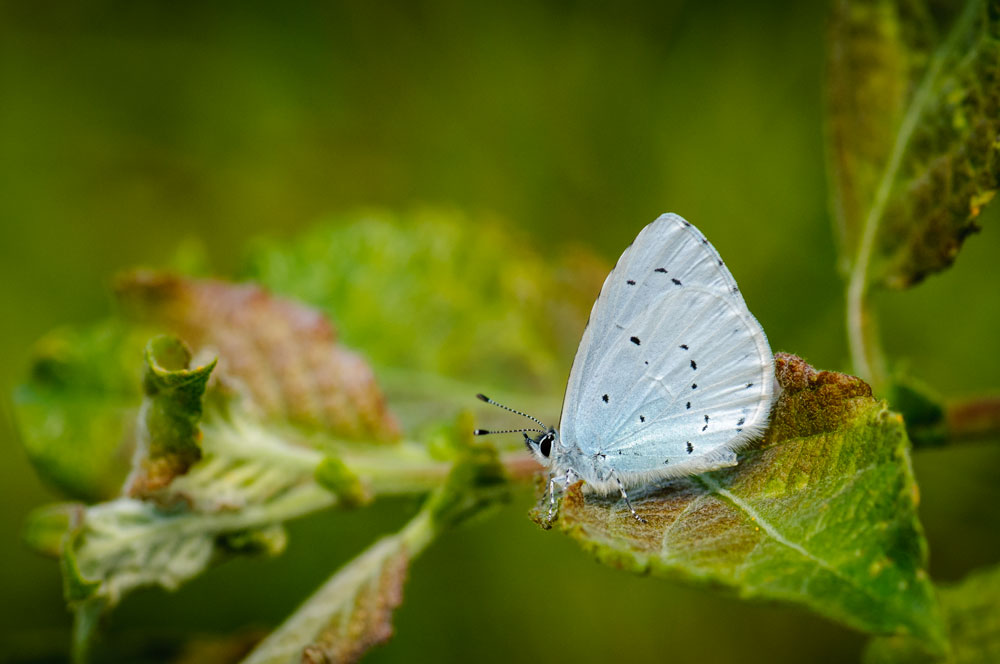
Holly Blue Celastrina argiolus
Habitat
The Holly Blue has extended its range northwards over the last few decades, now reaching as far as Cumbria. It is found in woody parks, churchyards and gardens, basking high on the foliage of trees, and feeding on the honeydew of aphids or salts from damp mud, rather than nectaring on flowers.
Identification
The male is violet-blue and can be confused with the Common Blue male. The female has distinctive black wing tips, and both sexes have pale blue undersides with black spots.
Flight times
Generally double-brooded further south, it is on the wing from late March to late June, and again from July to early September. Numbers fluctuate widely from year to year.
Food plants
Spring generation females lay their eggs on Holly buds, whilst the summer brood lay mainly on Ivy. Dogwood, Spindle and Pyracantha are also used.
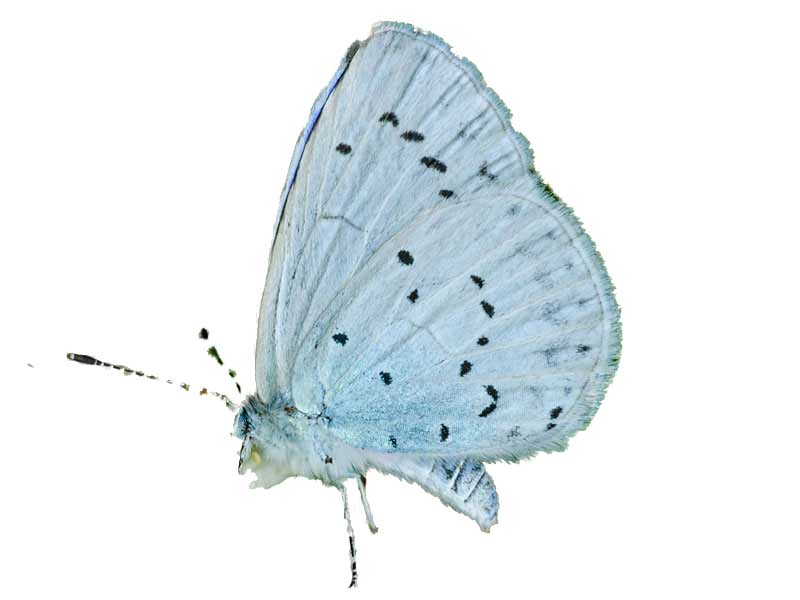
Distribution Maps
2005-2009
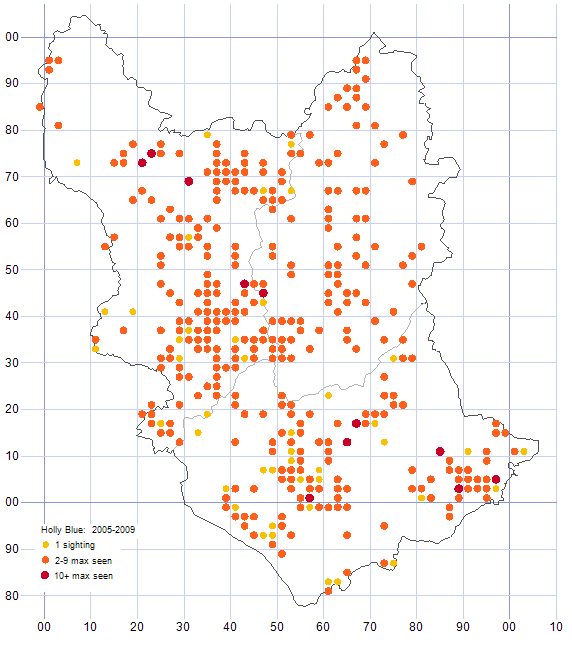
2010-14
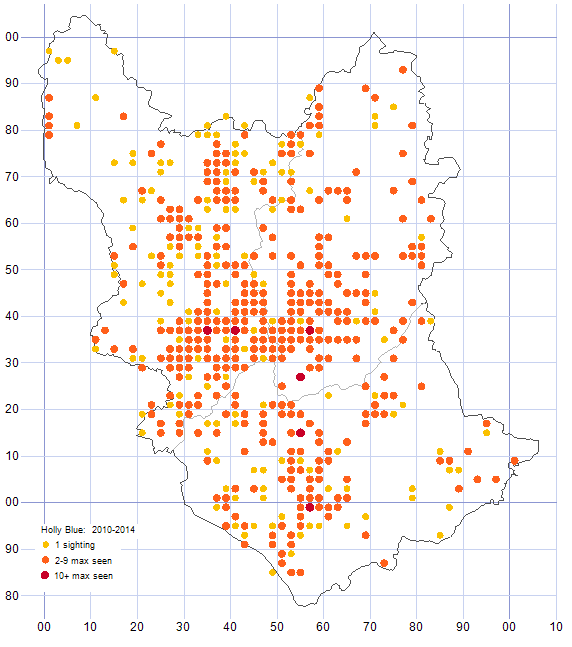
2015-2019
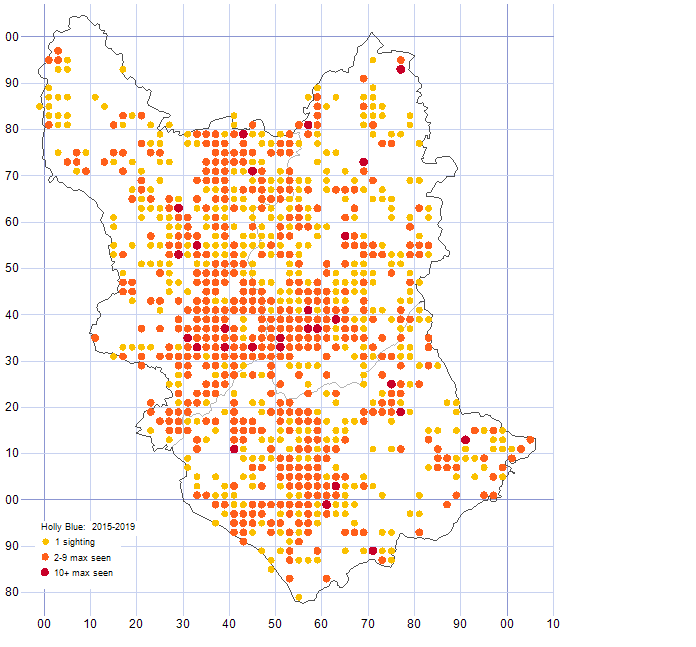
2015
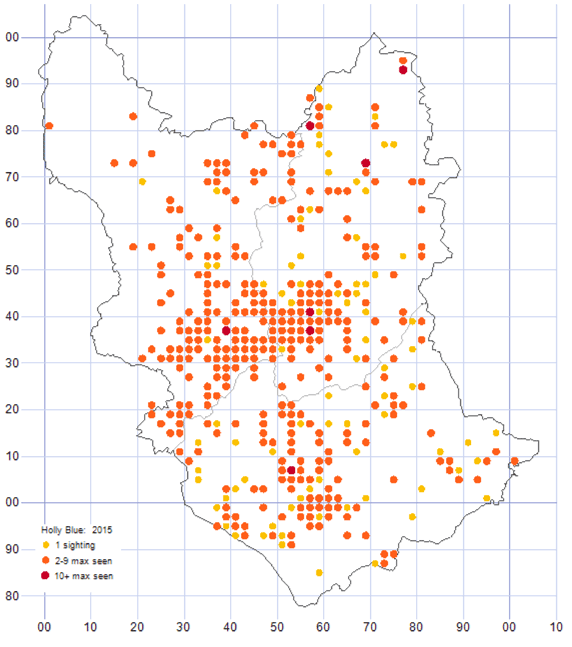
| No of tetrads | 415 |
|---|---|
| First sighting | 05/04/2015 |
| Last sighting | 11/10/2015 |
2016
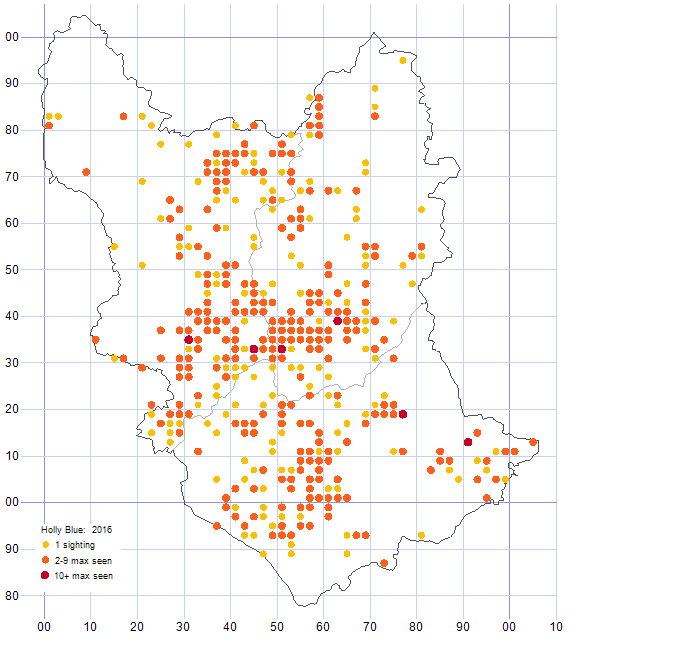
| No of tetrads | 400 |
|---|---|
| First sighting | 12/04/2016 |
| Last sighting | 22/10/2016 |
2017
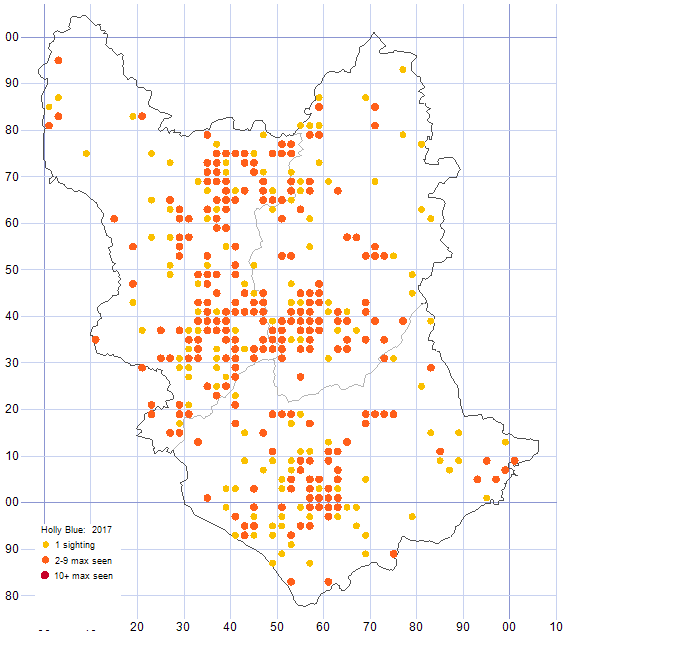
| No of tetrads | 367 |
|---|---|
| First sighting | 27/03/2017 |
| Last sighting | 10/10/2017 |
2018
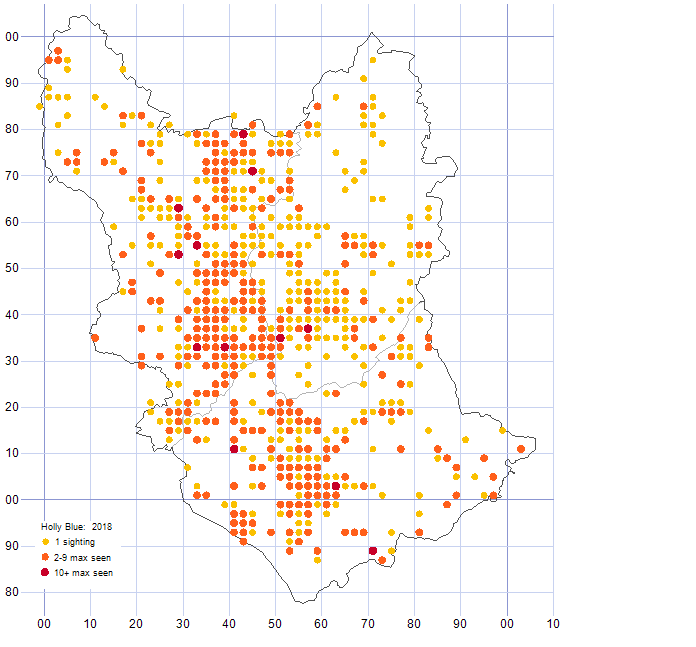
| No of tetrads | 631 |
|---|---|
| First sighting | 21/04/2018 |
| Last sighting | 02/09/2018 |
2019
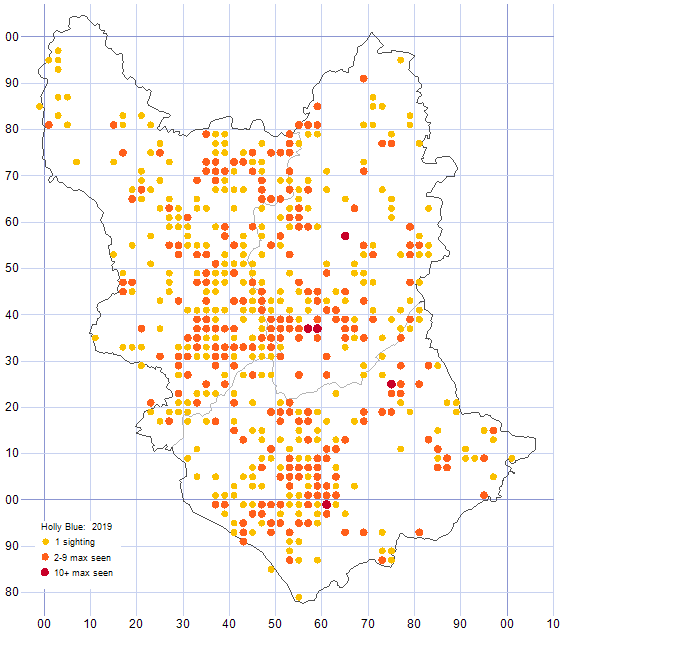
| No of tetrads | 537 |
|---|---|
| First sighting | 20/03/2019 |
| Last sighting | 05/10/2019 |
2020
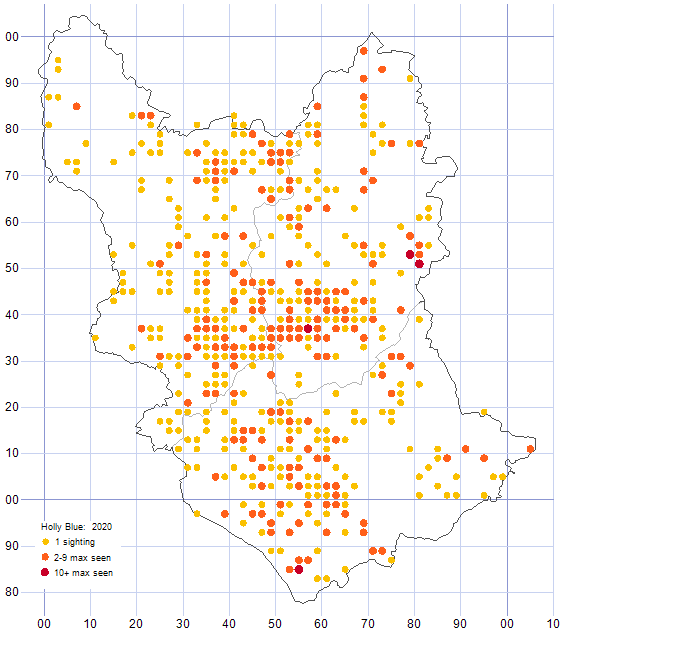
| No of tetrads | 500 |
|---|---|
| First sighting | 26/03/2020 |
| Last sighting | 29/09/2020 |
2021
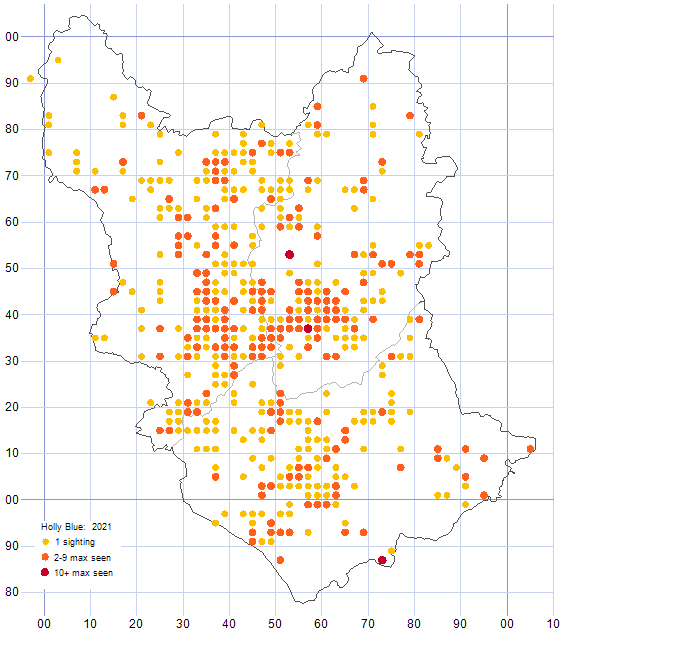
| No of tetrads | 465 |
|---|---|
| First sighting | 30/03/2021 |
| Last sighting | 19/11/2021 |
2022
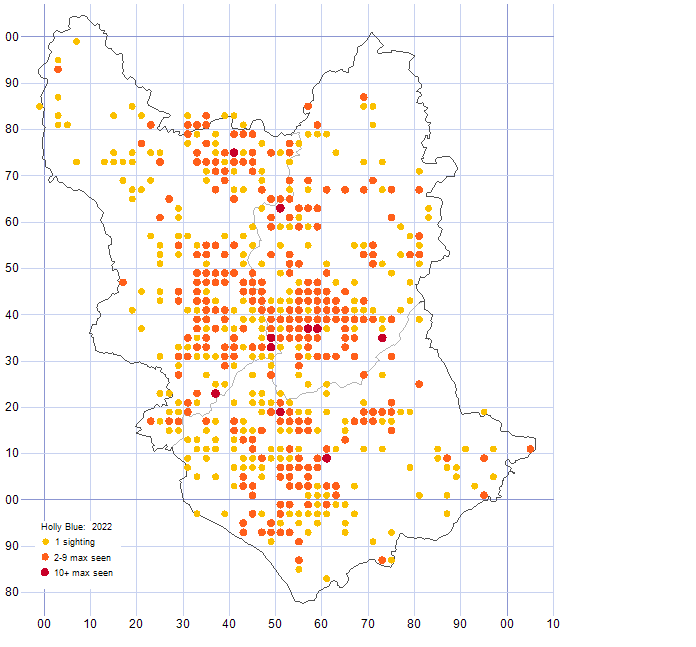
| No of tetrads | 541 |
|---|---|
| First sighting | 18/03/2022 |
| Last sighting | 29/10/2022 |
2023
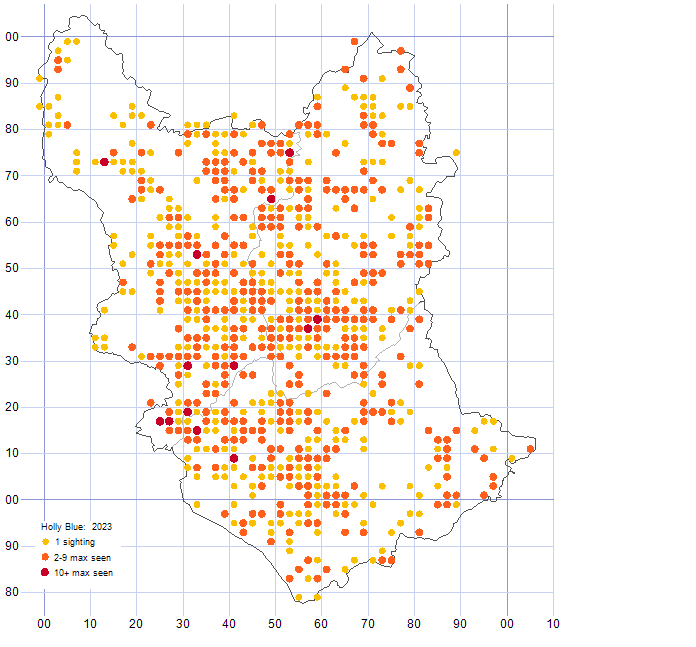
| No of tetrads | 737 |
|---|---|
| First sighting | 02/04/2023 |
| Last sighting | 09/10/2023 |
2024
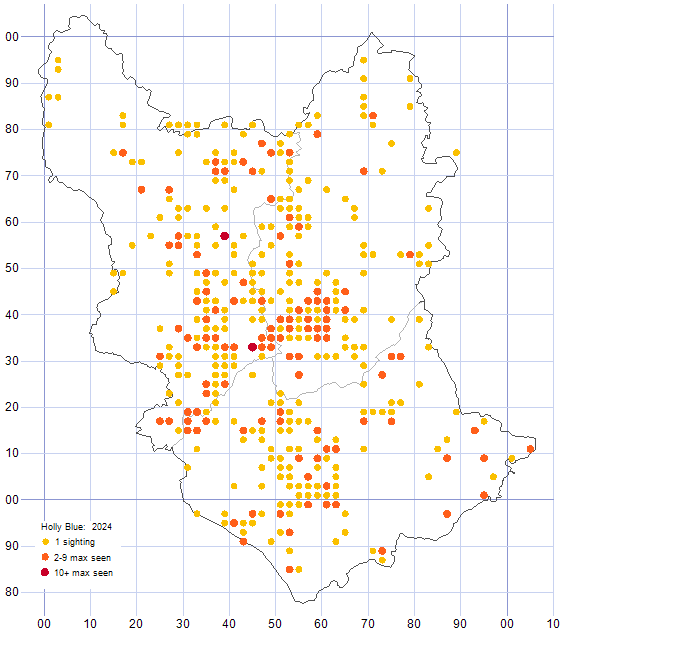
| No of tetrads | 388 |
|---|---|
| First sighting | 29/03/2024 |
| Last sighting | 22/10/2024 |
